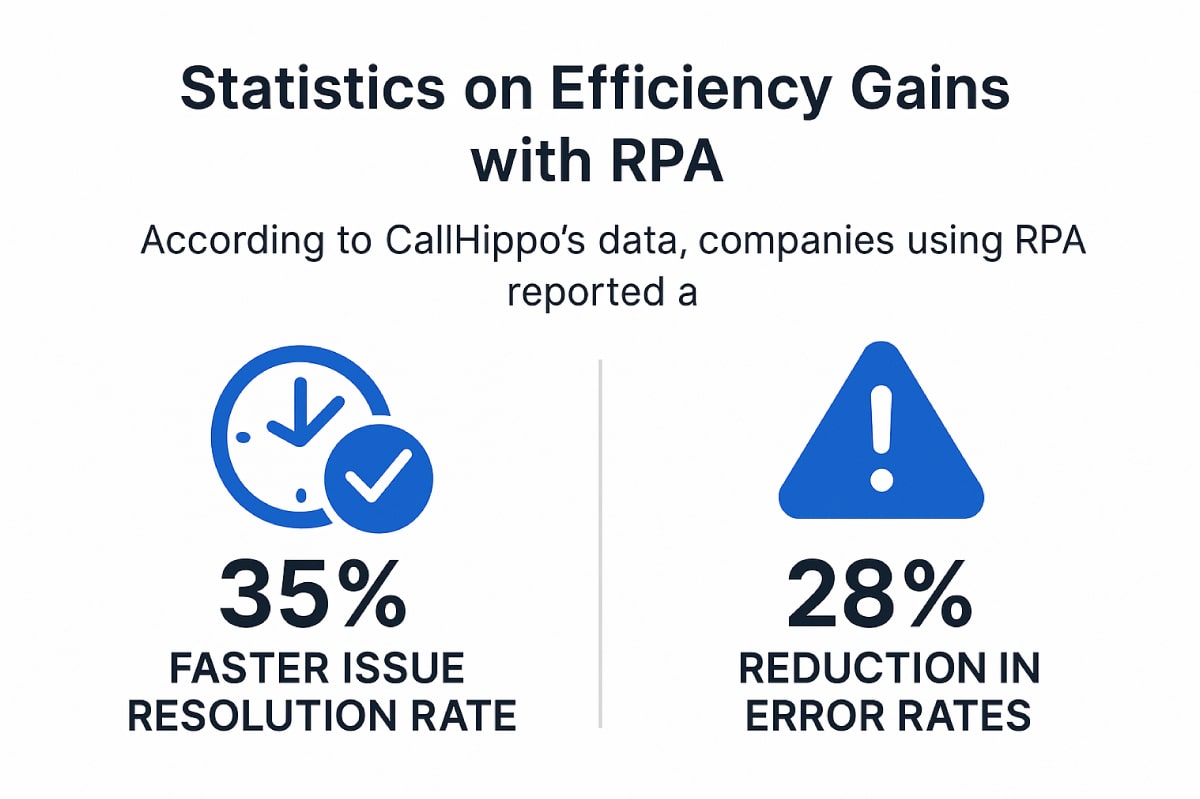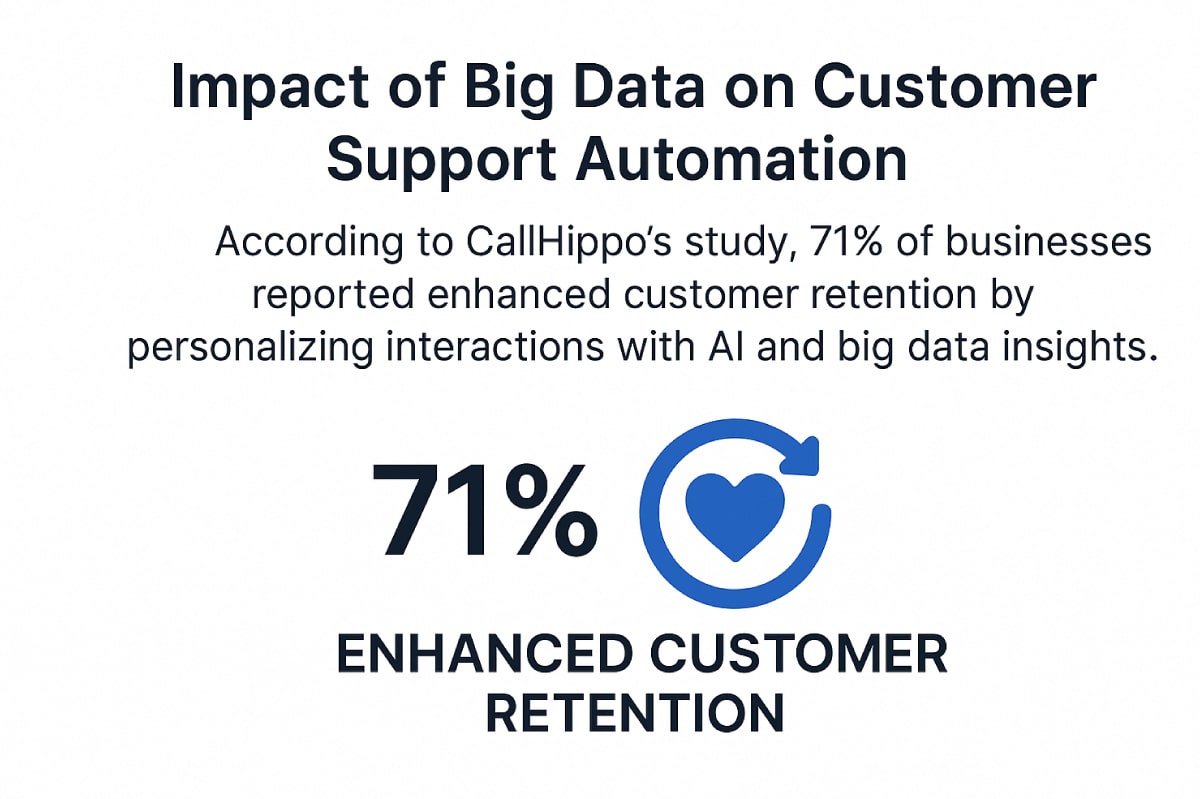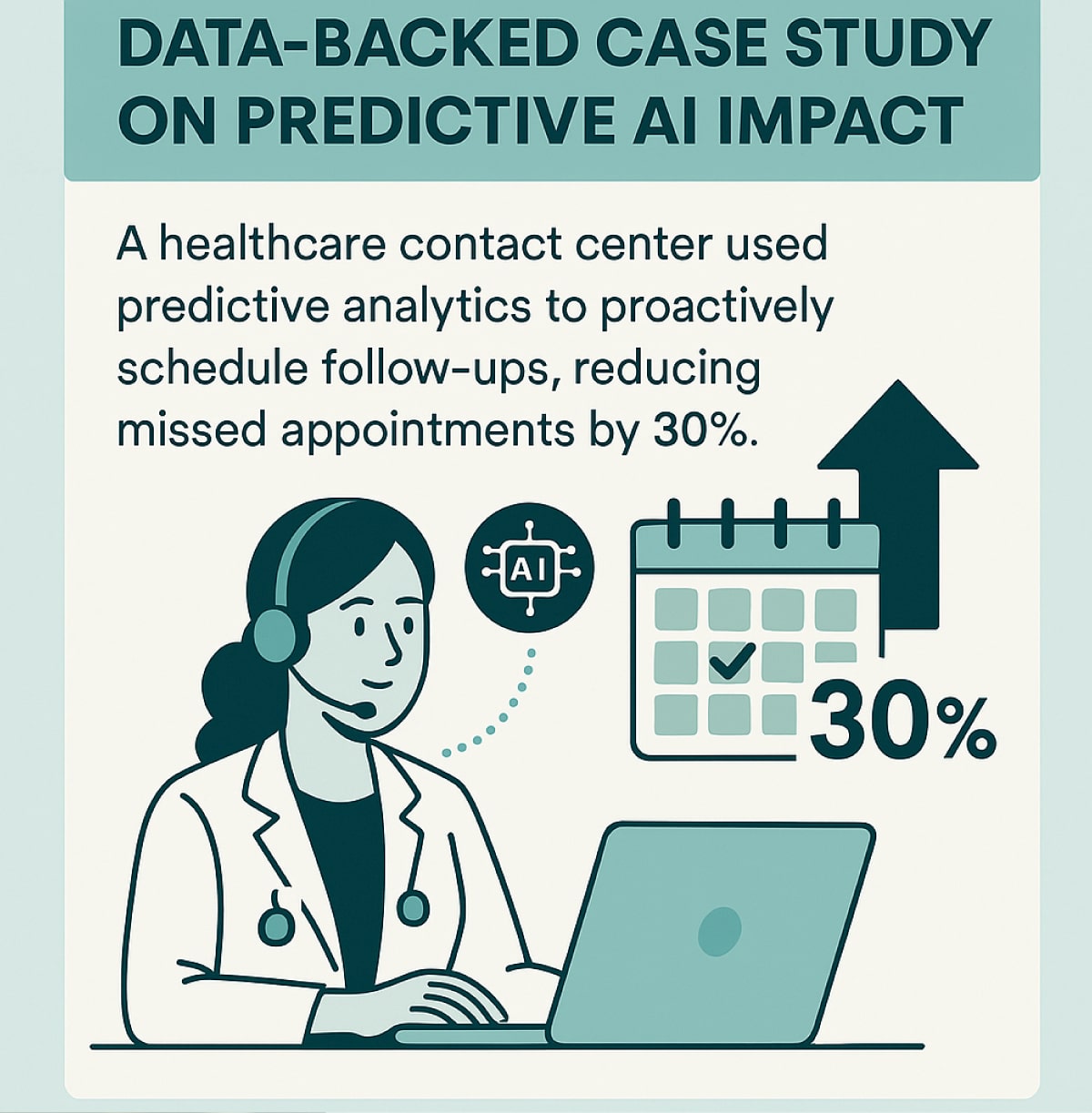As customer expectations grow, businesses are increasingly turning to automated solutions to enhance customer experiences (CX), streamline operations, and reduce costs.
In this blog, we’ll explore the top 10 contact center automation trends to watch out for in 2025, backed by data, market projections, and real-world examples.
Top 10 Contact Center Automation Trends for Businesses
As contact centers embrace digital transformation, automation is becoming essential for improving efficiency and customer satisfaction. The following trends highlight the most impactful automation technologies shaping the future of contact center technologies in 2025.
1. AI-Driven Chatbots & Virtual Agents
AI-powered chatbots and virtual agents are transforming customer interactions by providing real-time support, reducing wait times, and handling routine queries. These AI assistants improve efficiency and free up human agents for complex tasks.
- Growth of AI-powered self-service solutions
According to CallHippo’s research, 74% of businesses reported improved customer satisfaction scores (CSAT) after deploying AI chatbots. Automated self-service options enable faster query resolution, reducing the need for human intervention. - Market projections for AI chatbots in contact centers
The global AI chatbot market is projected to reach $9.4 billion by 2025, growing at a 24.3% CAGR, driven by the increasing demand for customer self-service capabilities. - Case studies of companies improving CX with AI bots
A leading eCommerce company automated 60% of its customer service interactions using AI bots, resulting in a 35% reduction in average handle time (AHT) and a 20% increase in first-contact resolution.
2. Intelligent Voice Assistants & Conversational AI
Voice AI is gaining traction in contact centers, enabling natural, human-like conversations and enhancing call resolutions.
- Role of voice AI in enhancing call resolutions
AI-powered voice assistants can interpret intonation, context, and speech patterns to understand customer needs better. This leads to faster issue resolution and more personalized experiences. - Statistics on customer preferences for voice AI
According to CallHippo’s survey, 59% of customers prefer interacting with AI-powered voice bots for basic queries due to their speed and accuracy. - Real-world examples of AI-powered voice bots
A telecom company implemented voice AI to handle billing inquiries and achieved a 40% reduction in call transfers, improving customer satisfaction.

3. Workforce Optimization Through Automation
AI-powered workforce optimization (WFO) tools are streamlining contact center operations by automating agent scheduling, performance monitoring, and task management.
- AI-based workforce management tools
Automated scheduling tools use predictive analytics to forecast call volumes, optimize agent allocation, and reduce idle time. - Data-driven scheduling and agent performance analytics
CallHippo’s research reveals that 68% of contact centers using WFO solutions reported 15-20% improvements in agent productivity through better task distribution. - Reduction in operational costs due to automation
Automating workforce management leads to a 23% decrease in overtime costs by optimizing agent availability.
4. Robotic Process Automation (RPA) for Contact Centers
RPA is transforming backend operations by automating repetitive tasks such as data entry, call routing, and customer authentication.
- How RPA streamlines backend operations
RPA bots can handle data extraction, order processing, and ticket management, reducing agent workload and improving efficiency. - Key industries adopting RPA in customer support
Industries like banking, insurance, and telecom are heavily investing in RPA to streamline contact center processes. - Statistics on efficiency gains with RPA
According to CallHippo’s data, companies using RPA reported a 35% faster issue resolution rate and a 28% reduction in error rates.

5. AI-Powered Sentiment Analysis & Emotion Detection
AI-powered sentiment analysis enables contact centers to gauge customer emotions in real-time, allowing for more empathetic responses and improved CX.
- Use of AI to analyze customer emotions in real-time
AI algorithms detect tone, language, and context to determine customer sentiment, helping agents respond appropriately. - Market growth of sentiment analysis solutions
The sentiment analysis market is expected to grow from $4.2 billion in 2023 to $8.3 billion by 2025, driven by the increasing focus on CX enhancement. - Case study on improved customer satisfaction with AI insights
A fintech company used AI sentiment analysis to identify dissatisfied customers early, reducing customer churn by 18% through proactive engagement.
6. Hyper-Personalization with AI & Big Data
AI and big data enable hyper-personalized customer experiences, driving higher customer satisfaction and loyalty.
- AI-driven personalization in customer interactions
AI analyzes customer behavior, purchase history, and preferences to offer tailored recommendations and support. - Impact of big data on customer support automation
According to CallHippo’s study, 71% of businesses reported enhanced customer retention by personalizing interactions with AI and big data insights.

- Research on improved CX through hyper-personalization
Companies leveraging AI for hyper-personalization achieved a 29% increase in repeat customer transactions.
7. Low-Code & No-Code Automation Solutions
The adoption of low-code and no-code platforms is making automation accessible to non-technical teams, accelerating deployment times.
- Adoption of easy-to-deploy contact center automation tools
Low-code platforms allow businesses to create automation workflows without extensive programming knowledge, speeding up deployment. - How no-code platforms empower non-tech teams
CallHippo’s research shows that 48% of contact centers implemented no-code solutions, enabling faster automation of routine tasks by non-developers. - Market trends and adoption rates
The low-code development market is projected to grow by 22.6% annually, reaching $45.5 billion by 2025.
8. Cloud-Based & Hybrid Contact Center Automation
The shift to cloud-based contact centers is accelerating, offering greater scalability, flexibility, and cost-efficiency.
- Shift to cloud-based automation solutions
Cloud platforms enable remote access, seamless upgrades, and real-time data syncing, making them ideal for distributed teams. - Growth statistics of cloud contact center adoption
According to CallHippo’s data, 65% of companies plan to switch to cloud-based contact centers by 2025. - Comparison of cloud vs. on-premise automation
Cloud-based solutions offer 30-50% lower upfront costs and faster implementation compared to on-premise setups.
9. AI-Driven Analytics & Predictive Insights
AI-powered analytics help businesses predict customer needs, identify trends, and make data-driven decisions.
- How AI analytics improves customer interactions
Predictive models anticipate customer issues and recommend proactive solutions, reducing escalation rates. - Predictive analytics trends for proactive support
CallHippo’s research shows that 55% of businesses using AI analytics reported 22% higher customer retention rates. - Data-backed case study on predictive AI impact
A healthcare contact center used predictive analytics to proactively schedule follow-ups, reducing missed appointments by 30%.

10. Compliance & Security in Automated Contact Centers
With rising data privacy regulations, contact centers are prioritizing AI-driven security and compliance automation.
- AI-driven security measures and compliance automation
Automated tools ensure GDPR, CCPA, and HIPAA compliance by encrypting data and preventing unauthorized access. - Impact of regulations (GDPR, CCPA) on automation adoption
68% of businesses cited compliance concerns as a key driver for adopting automated security measures. - Statistics on cybersecurity concerns in contact centers
According to CallHippo, 61% of contact centers consider data security their top priority in automation initiatives.
Conclusion
As contact centers continue to evolve, automation will play a critical role in enhancing efficiency, reducing costs, and delivering exceptional customer experiences. From AI-powered chatbots to predictive analytics and cloud-based automation, these trends will shape the future of customer support in 2025.
By investing in cutting-edge automation technologies, businesses can streamline operations, improve customer satisfaction, and stay ahead of the competition.

Subscribe to our newsletter & never miss our latest news and promotions.









